In this tutorial, you will learn how to import a meshed HyperMesh model, organize elements, set up an extrusion model and finally export for a hollow profile. The steps are:
| • | Import the HyperMesh file with hollow profile mesh |
| • | Generate solver input files using the Extrusion Wizard |
The model files for this tutorial are located in the file mfs-1.zip in the subdirectory \hx\MetalExtrusion\HX_0108. See Accessing Model Files.
To work on this tutorial, it is recommended that you copy this folder to your local hard drive where you store your HyperXtrude data, for example, “C:\Users\HyperXtrude\” on a Windows machine. This will enable you to edit and modify these files without affecting the original data. In addition, it is best to keep the data on a local disk attached to the machine to improve the I/O performance of the software.
| 1. | From the Start menu select: All Programs > Altair > HyperXtrude to launch the HyperXtrude user interface. |
| 2. | The User Profiles dialog appears with Manufacturing Solutions as the default application. If it does not appear, you can access it from the menu bar by clicking Preferences > User Profiles. |
| 3. | Select HyperXtrude and Metal Extrusion. |
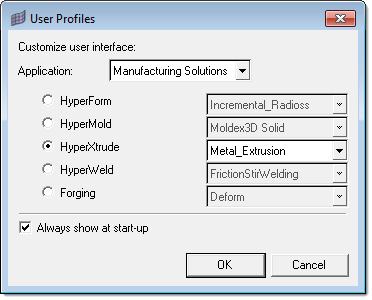
|
| 1. | From the menu bar, click Collectors > Organize > Components. In the panel, activate the collectors radio button. |
| 2. | Click the toggle to change the selector to elems. |
| 3. | Click elems and select the by collector option. |
| 4. | Select WeldChamber3D and click select. |
| 5. | Click dest component = and select Portholes3D. |
| 6. | Click move and click return. |

The elements of the WeldChamber3D component will now be added to Portholes3D component and the WeldChamber3D becomes empty. You can verify this by displaying one of these components at a time. Delete the empty WeldChamber3D component.
|
| 1. | On the Utility Menu, click Extrusion Wizard. Depending on how you loaded the model, the Project Browser may prompt you for additional action (see HX-0004 for details). |
| 2. | In the Extrusion Wizard, click Set Model Units. |
Note: Measure dimensions of the model by pressing F4 button on the key board to get an idea about the units of the model.
The length unit of the current model is in millimeters (Billet diameter is about 162).
| 3. | Set the Unit System field to Metric and set the options as shown in the figure below. Click OK. |
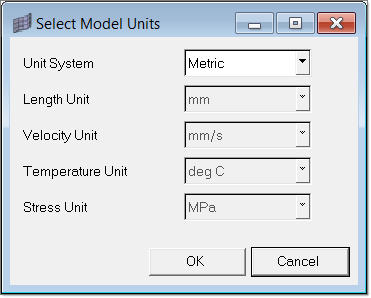
| 4. | Click Set Analysis Requirements and set the Process Data as shown in the figure below. Click Next. |
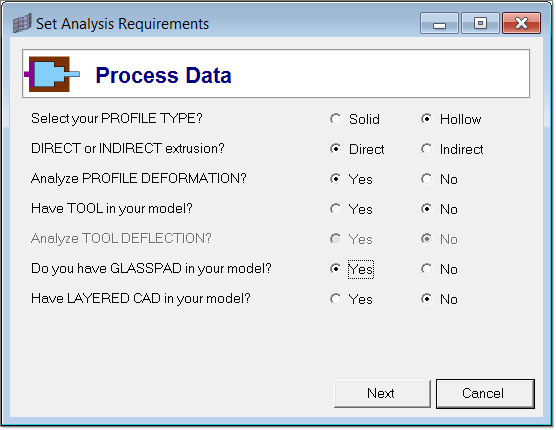
| 5. | In the Analysis Data page, click Yes on the last question, "Want to Control MESHING?". |
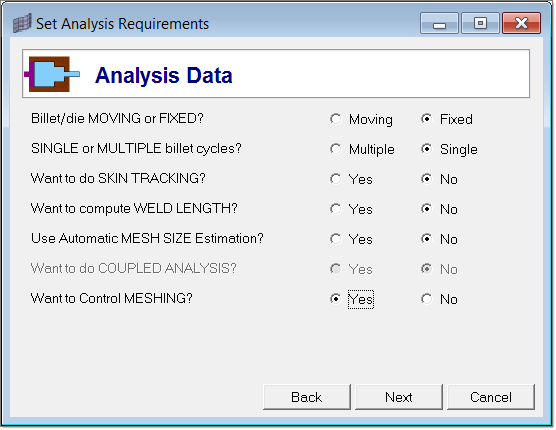
| 6. | Click Next to go to the Advanced Meshing Data page. |
| 7. | Click Yes to the first question, "Have existing MESH in your model?" This sets the other options to No automatically. |
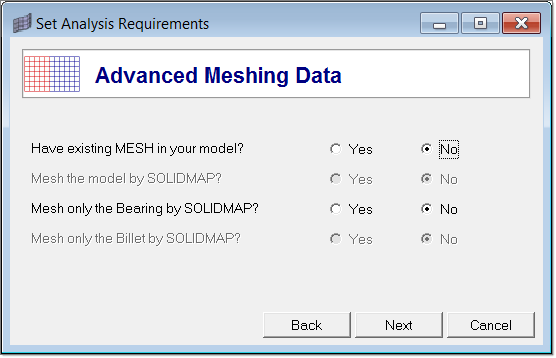
| 8. | Click Next to go to the Select Extrusion Components page. Select Portholes+Welding Chamber and click OK. |
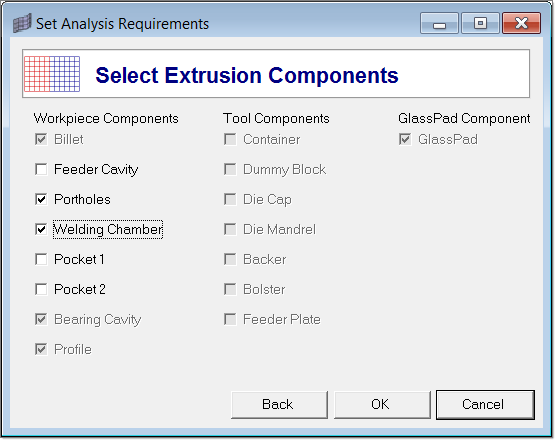
In the Extrusion Wizard, you will skip the Select Press Data step as this model does not contain the information.
|
| 1. | Click Select Material Data. |
| 2. | Expand Workpiece, then expand Aluminum_Alloys and expand 6000_Series. |
| 3. | Select AA6063 and click Add-> to add the material under Selected Materials. |
You do not need to assign a material in the Extrusion Wizard. The selected material will be assigned to the workpiece automatically.
| 4. | Click Close to close the Select and Assign Material from Database window. |
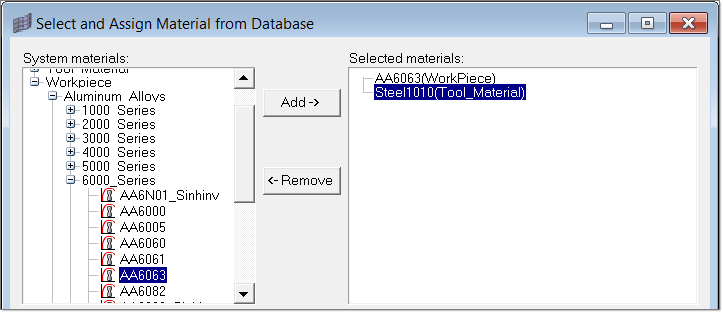
|
| 1. | Click on the Set Component Information checkbox in the Extrusion Wizard. |
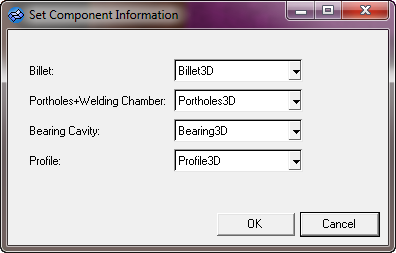
| 2. | Accept the selections and click OK to save the status. |
|
| 1. | Click Generate Workpiece BCs and accept the default conditions. |
| 2. | Click OK. This creates BC faces and associated load cards for all the 3D collectors. |
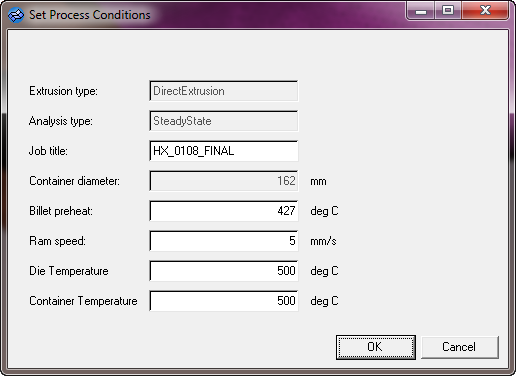
|
| 1. | In the Extrusion Wizard, click Save and Export the Model. |
| 2. | Export the model with the following: |
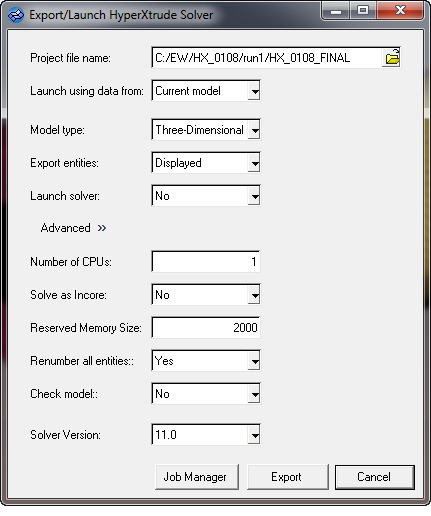
| 3. | Click Export to generate HX_0108_FINAL.grf and HX_0108_FINAL.hx files. |
The .hx and .grf files can be passed to the HyperXtrude solver for solving analysis.
| 4. | To launch the solver interactively, set Launch solver: to Interactive and then export. |
Alternatively, you can set Launch solver: to No and submit the job on e-compute.
|
| 1. | Run HyperXtrude interactively or in batch mode. |
| 2. | Once the analysis is completed, post-process the results. |
|
Return to Metal Extrusion Tutorials







